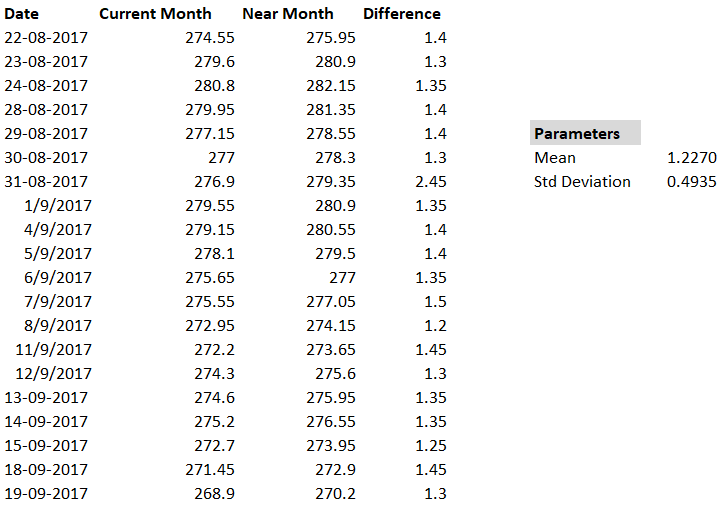Contents:


https://1investing.in/ to be recorded only after the cash is received. Time to be divided into annual periods to measure revenue properly. Guides accounting for expenses, ensures that all expenses are recorded when they are incurred during the period, and matches those expenses against the revenues of the period. Let’s now take a look at the T-accounts and unadjusted trial balance for Printing Plus to see how the information is transferred from the T-accounts to the unadjusted trial balance. Finally, if some adjusting entries were entered, it must be reflected on a trial balance.
Assume that a trial balance is prepared with an account balance of $21,740 listed as $2,174 and an account balance of $4,500 listed as $5,400. The opening stock and closing stock are accounted for therein. Adjustments are carried out at the stage of preparation of income statement of balance sheet for closing stock work in progress and finished goods.
- The debits would still equal the credits, but the individual accounts are incorrect.
- In other words, accounting errors occur when your trial balance sheet does not tally.
- Accounting is the process of recording, summarizing, and reporting financial transactions to oversight agencies, regulators, and the IRS.
- For example, transactions classified improperly or those simply missing from the system still could be material accounting errors that would not be detected by the trial balance procedure.
- It’s also possible to look at your balance for a shorter period.
In this case, it should show the figures before the adjustment, the adjusting entry, and the balances after the adjustment. When a transaction to be recorded in the books of account is partially omitted and due to which trial balance does not get tallied, it is known as error of partial omission. Typically, you prepare the trial balance sheet at the end of the financial year. However, you can choose to prepare a trial balance at the end of a month, quarter, half-year, or a year. While it is not a financial statement, a trial balance acts as the first step in preparing one.
Preparation and Process
Before the errors can be identified and corrected, a temporary suspense account is created to match the trial balance totals temporarily. Furthermore, the assets and liabilities have to be listed in order of liquidity, which refers to how quickly an asset can be converted to cash to pay off liabilities. This includes cash and short-term accounts receivables. Before you start off with the trial balance, you need to make sure that every ledger account is balanced.
Steppe change: How Russia’s war on Ukraine is reshaping Kazakhstan – European Council on Foreign Relations
Steppe change: How Russia’s war on Ukraine is reshaping Kazakhstan.
Posted: Thu, 13 Apr 2023 08:00:00 GMT [source]
Both the debit and credit columns of the Trial Balance must tally since every debit has every credit. However, it is an indication that there were some errors made while recording transactions in ledger or trial in cases where they are not equal. A trial balance is a report that lists the balances of all general ledger accounts of a company at a certain point in time. The accounts reflected on a trial balance are related to all major accounting items, including assets, liabilities, equity, revenues, expenses, gains, and losses.
Key Difference – Trial Balance vs Adjusted Trial Balance
The right accounting or invoicing platform can minimize errors caused by manual data entry. Advanced AI can even pull financial data straight from your invoices and other documents, and this automation increases your efficiency while boosting your overall accuracy. This is where you can make the mistake of recording items in the wrong column or even the wrong account. This will significantly alter the accuracy of your completed trial balance and cost you valuable time chasing down your mistake. You’ll record the total credit amounts in the left column (i.e., the column immediately to the right of your account names) and your total debit balance in the column on the far right. Limitations aside, a trial balance can still be a valuable tool for evaluating your company’s finances, and it can be helpful when you examine your company’s financial statements.
The main objective of preparing a trial balance is to detect the mathematical accuracy of the ledger balances. A trial balance is a report that is used internally within the company, while the balance sheet is usually released to investors and financial institutions outside the company. The primary function of the trial balance is to see if the total credits and debits in the books of account balance with each other. You can prepare a trial balance for every month or even every quarter. The balance sheet, however, is a document that is prepared for each financial year.
Further, the closing debit or credit balances in various ledger accounts go into the Trial Balance of the business for a particular year. While a trial balance is good for ensuring that the credit and debit balances of business are in agreement, it does not guarantee that the totals will be correct. Errors and fraud can still lurk in either column, despite the agreement in the totals. A trial balance also does not reflect any transactions outside the cutoff date. If these totals were not recorded in the accounting system, they will not be reflected in the trial balance.
Recent posts
Once you complete the movement from general ledger to trial balance, the next step you need to do is start reconciling the TB. This statement could not be used for presenting financial information to management or reporting to relevant stakeholders. Searching for and fixing these errors is called making correcting entries. Tax accountants and auditors also use this report to prepare tax returns and begin the audit process. The TB format lends itself to a wide variety of uses. In the Business Tools area is a sample income statement for your use.
Which of the following statements is true of the worksheet? Net income is recorded in the balance sheet debit column. Net income is recorded in the adjusted trial balance debit column. Net income is recorded in the income statement debit column. Net income is recorded in the income statement credit column. Recording transactions as they occur during the period.
It is the how to write a receipts used to prepare the drafting financial statements and double-checks the mathematical accuracy of ledgers. Once you’ve double checked that you’ve recorded your debit and credit entries transactions properly and confirmed the account totals are correct, it’s time to make adjusting entries. As the bookkeepers and accountants examine the report and find errors in the accounts, they record adjusting journal entries to correct them. After these errors are corrected, the TB is considered anadjusted trial balance.
Choosing between a months-long investigation and informal … – The Daily Princetonian
Choosing between a months-long investigation and informal ….
Posted: Thu, 13 Apr 2023 03:51:00 GMT [source]
A trial balance is an accounting report listing the ending balances in each general ledger accounts. This report is used to ensure that the totals of all debits equal the totals of all credits. It’s prepared to help in generating accurate financial statements. Once all ledger accounts and their balances are recorded, the debit and credit columns on the trial balance are totaled to see if the figures in each column match each other.
Perform the same calculation for your debit column. Again, this is simply a sum of all the debits of your accounts for that period. And how do you prepare a trial balance report? A thorough understanding of these documents can reduce your error rate — not to mention your stress levels. Which trial balance will consist of the greatest number of accounts? The trial balance summarizes the balances of assets, liabilities, and equity.
A general ledger is a record-keeping system for a company’s financial data, with debit and credit account records validated by a trial balance. Take the pain out of generating the trial balance and balance sheets using an intelligent business accounting software such as TallyPrime. It helps you balance your books and audit all transactions efficiently and quickly. Follow this step to close all of the accounts in the ledger. Remember, assets and expenses accounts are reporting on the debit side of TB.
What are debits and credits?
So, if you make a sale and collect the cash, you would account for it as follows. The cash of the seller sees an increase in revenue. So the company’s cash account will be debited and the sales account will be credited to record the transaction.
As per the principles of double-entry bookkeeping, the debits and credits must balance each other. To properly understand the need for balancing figures in the trial balance, we must first understand the concept of debits and credits. Trial balance is the statement prepared by a business at the end of an accounting period to understand the balances of the ledger accounts. The trial balance shows all the general ledger account debit or credit balance. A correct trial balance will have equal credit and debit balance. Trial Balance only confirms that the total of all debit balances match the total of all credit balances.
Companies initially record their business transactions in bookkeeping accounts within the general ledger. Furthermore, some accounts may have been used to record multiple business transactions. Adjusted trial balance can be defined as “a listing of the general ledger accounts and their account balances at a point in time after the adjusting entries have been posted”. Thus, it should always be prepared after the trial balance. Adjusted trial balance includes the following accounting entries, which are not included in the trial balance.

It is an essential procedure for the closure of books of accounts, but it is not error free. To make your accounting seamless, accurate and error free it is a good idea to move to a good accounting system like Deskera which is especially suitable for small businesses. A trial balance provides all the ending balances in a single document at a glance; therefore, it is easy to use as a reference tool. It also assists in disclosing a number of possible errors in case of occurrence and helps to identify which journal entries should be posted in order to correct the identified errors. A balance sheet also balances two columns; assets and liabilities. It gives a clear picture of the overall financial status and health of a company.

Hence trial balance is important in case of adjustments. Whenever any adjustment is performed run trial balance and confirm if all the debit amount is equal to credit amount. For example, Cash has a final balance of $24,800 on the debit side. This balance is transferred to the Cash account in the debit column on the unadjusted trial balance. Accounts Payable ($500), Unearned Revenue ($4,000), Common Stock ($20,000) and Service Revenue ($9,500) all have credit final balances in their T-accounts.
However, your Trial Balance Sheet would balance out. Besides such an error, there are other errors that you must rectify. It is important to note that the balancing of the trial balance columns does not ensure the accuracy of accounts. This is because there are some errors that do not have an impact on the equality of the debit and the credit columns. Companies can use a trial balance to keep track of their financial position, and so they may prepare several different types of trial balance throughout the financial year. A trial balance may contain all the major accounting items, including assets, liabilities, equity, revenues, expenses, gains, and losses.

